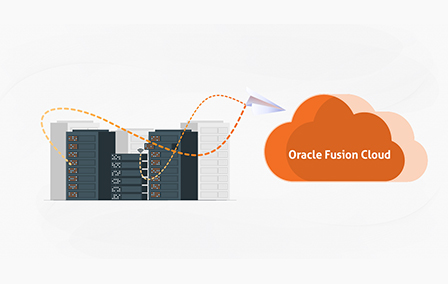
EBS and PeopleSoft Transformation to Fusion refers to the process of migrating enterprise resource planning (ERP) systems from either Oracle E-Business Suite (EBS) or PeopleSoft to Oracle Fusion Applications. This transformation typically involves a comprehensive overhaul of the existing ERP infrastructure, including data migration, configuration, customization, and training.
Overall, the EBS and PeopleSoft Transformation to Fusion represents a significant endeavor aimed at modernizing and streamlining ERP capabilities, enabling organizations to leverage the advanced features and functionalities offered by Oracle Fusion Applications for improved business agility and efficiency.
Conducting a thorough assessment of your existing EBS and Peoplesoft environment to understand your business processes, customizations, and integration points. Defining the optimal future state with Oracle Fusion applications, aligning with your business objectives and growth strategy. Developing a detailed transformation roadmap, including timelines, milestones, and resource requirements, to ensure a structured and efficient transition.
Identifying opportunities to optimize and streamline business processes during the transition to Oracle Fusion. Incorporating industry best practices and leveraging the enhanced capabilities of Oracle Fusion to improve efficiency and performance. Providing change management support to ensure a smooth transition and user adoption of new processes and systems.
Evaluating the data quality and integrity of your current EBS and Peoplesoft data. Creating detailed data mapping plans to ensure accurate and seamless data migration from EBS and Peoplesoft to Fusion. Utilizing automated tools and proven methodologies to migrate data securely and efficiently. Performing rigorous data validation to ensure the accuracy and completeness of the migrated data.
Developing a robust integration strategy to connect Oracle Fusion applications with your existing systems and third-party applications. Designing and implementing custom integrations to meet your specific business needs. Leveraging Oracle Integration Cloud (OIC) and other middleware technologies for seamless connectivity and data flow. Managing APIs to ensure secure and efficient data exchange between systems.
Identifying and documenting your unique business requirements and customizations. Configuring Oracle Fusion applications to meet your specific needs, including workflows, reports, and dashboards. Developing and deploying custom extensions and enhancements to Oracle Fusion as required.
Conducting extensive testing, including unit testing, system integration testing, and user acceptance testing (UAT), to ensure the new system meets all requirements. Identifying and resolving any issues or defects discovered during the testing phases. Ensuring that the Oracle Fusion applications perform optimally under expected workloads.
Developing and delivering tailored training programs to ensure your team is proficient in using Oracle Fusion applications. Providing comprehensive user manuals and documentation to support ongoing learning and reference. Offering dedicated support during the go-live phase to address any immediate concerns or issues. Providing continuous support and maintenance to ensure the stability and performance of your Oracle Fusion environment.
Transforming from legacy system to Oracle Fusion with a detailed cutover strategy and ensure a smooth transition. Meticulous strategy with thorough planning, rigorous testing, effective training, and continuous support, ensuring minimal disruption and maximum efficiency during the transformation process.

Here are some of the FAQ's that can serve as a convenient resource for individuals seeking quick answers to common inquiries without the need for direct interaction with customer support or representatives.
Companies may consider this transformation to modernize their ERP systems, take advantage of the latest technology advancements, streamline business processes, and improve overall efficiency and agility.
Some key steps include assessing the current EBS and PeopleSoft environment, developing a migration strategy, data cleansing and migration, configuration and customization of Oracle Fusion Applications, testing, and training.
It is a long established fact that a reader be distracted by the readable content of a page when looking a its layout. Many desktop publishing packages and web page editors now use Lorem Ipsum
The duration of the transformation process varies depending on factors such as the size and complexity of the existing ERP system, the scope of customization, data volume, and the resources allocated to the project. It can range from several months to over a year.